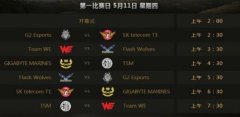彭永臻
彭永臻,1968年至1973年为原黑龙江生产建设兵团知青;1981年作为中国首批硕士研究生毕业于哈尔滨建筑工程学院(现哈尔滨工业大学),1985年获环境工程专业博士学位。1990年与1993年分别破格晋升为副教授与教授,1997年评为博士生导师,1998年获黑龙江省优秀中青年专家称号和国务院颁发的政府特殊津贴。2000年调入北京工业大学任教。2015年12月7日,彭永臻教授增选为土木、水利与建筑工程学部院士。[4]社会任职中国城镇供水排水协会常务理事,中国环境科学学会环境工程分会副主任委员,全国高等学校给水排水工程学科专业指导委员会委员,中国土木工程学会给水排水学会理事,中国工程建设标准化协会城市给水排水委员会委员,国际水学会(IWA)、日本水环境学会(JSWE)和美国水环境学会(WEF)会员。《环境科学学报》副主编,《北京工业大学学报》副主编,《中国给水排水》、《给水排水》和《Frontiers of Environmental Science & Engineering in China》等9本杂志的编委。
获得荣誉先后获黑龙江省优秀中青年专家、获政府特殊津贴、“国家教学名师”、“全国模范教师”,“北京市人民教师提名奖”等称号。
2015年中国工程院
土木、水利与建筑工程学部
院士增选的有效候选人,而且进入第二轮评选。12月7日,当选中国工程院土木、水利与建筑工程学部院士。2016年7月1日,彭永臻院士在人民大会堂被授予“全国优秀共产党员”称号,是北京工业大学校首位获此殊荣的党员。
学术简介研究方向主要研究方向是污水生物处理的理论与应用、活性污泥法污水处理系统的自动控制与智能控制、水环境与污水处理工程的管理信息系统。
学术成就已完成5项国家自然科学基金和2项教育部优秀年轻教师基金等近30项国家与省部级科研项目,其中包括2004和2009年2次获得国家科技进步奖二等奖,3次获得省部级科技一等奖。领导的教学团队于2007年被评为首批“国家级教学团队”,负责的《水质工程学》和主讲的《环境保护概论》先后获国家精品课程。主编与参编了3本全国统编教材和5本专著,发表论文400余篇,其中SCI检索的论文130余篇。获得发明专利授权38项。指导的博士生中已有39人获博士学位,并连续2次获得“全国优秀博士学位论文”奖,另2次获该项提名奖。
科研课题⒈“十一五”国家科技支撑计划重点项目--SBR工艺城市污水处理厂节能降耗关键技术
⒉ “十一五”重大科技专项课题--景观河湖水环境管理与水体补水保障研究;
⒊国家“十一五”重大科技专项课题--污水厂尾水作为城市河湖景观补水的深度脱氮除磷技术;
⒋ 国家“863计划”项目--活性污泥微膨胀节能理论与方法及中试研究。
⒌ 北京市教委科研基地--科技创新平台项目---污水脱氮除磷新理论与新工艺及节能降耗关键技术
⒍北京市自然科学基金重点项目(8091001)--城市垃圾渗滤液生物处理及短程生物脱氮新技术
⒎ 北京市高校人才强教深化计划高层次人才资助项目--污水脱氮除磷新理论与新工艺及节能降耗关键技术
⒏ 国家自然科学基金---海外青年学者合作研究基金项目--聚磷菌和聚糖菌在强化生物除磷系统中竞争机理与控制;
⒐ 新加坡环境与水工业协会创新发展项目--低溶解氧污泥微膨胀节能理论与方法研究。
⒑ 新加坡环境与水工业发展协会项目--CSBR过程控制及强化脱氮除磷研究。
学术获奖已主持了9项国家自然科学基金和2项教育部优秀年轻教师基金等30多项国家与省部级科研项目。先后获得获得了20余项省部级优秀教学成果奖和科技进步奖,2004年、2009年和2012年共3次获得国家科技进步奖二等奖。指导的博士生连续2次获得“全国优秀博士学位论文”奖,另3次获该项提名奖。2021年11月,荣获2020年度国家技术发明奖二等奖。[3]
教材著作彭永臻(主编)、崔福义编著,《给水排水工程计算机程序设计》,中国建筑工业出版社(1996);
彭永臻参编,《环境工程手册》--水污染控制卷,高等教育出版社出版(1996);
崔福义,彭永臻,《给水排水工程仪表与控制》,中国建筑工业出版社(1999);
彭永臻主审,《水质工程实验技术》,黑龙江教育出版社(2000);
彭永臻(主编)、崔福义编著,《给水排水工程计算机应用》,中国建筑工业出版社(2002),;
李军、杨秀山、彭永臻,《微生物与水处理工程》,化学工业出版社(2002);
王淑莹、高春娣,《环境导论》,中国建筑工业出版社(2004)(主审)
高景峰、彭永臻 译,《污水处理系统的建模、诊断和控制》,化学工业出版社(2005);
祝贵兵、彭永臻 译,《生物除磷的设计与运行手册》,中国建筑工业出版社(2005);
李圭白、张杰、彭永臻、崔福义等,《水质工程学》,中国建筑工业出版社(2005);
彭永臻参编,《新英汉给水排水辞典》(许保玖等主编),中国建筑工业出版社,2005年。
崔福义、彭永臻、南军编著,《给水排水工程仪表与控制》,中国建筑工业出版社(2006);
马勇,彭永臻著,《城市污水处理系统的运行与过程控制》,科学出版社,2007年。
马勇,彭永臻译著,《污水处理系统的仪表、控制和自动化》,中国建筑工业出版社,2007年
王晓莲,彭永臻著,《A2O法污水生物脱氮除磷处理技术与应用》,科学出版社,2009年。
吴昌永,王然登,彭永臻著,《污水处理颗粒污泥技术原理与应用》,中国建筑工业出版社,2011年
《SBR法污水生物脱氮除磷及过程控制》,科学出版社,2011年,彭永臻著
代表论文1.G. B. Zhu, S. Y. Wang, W. D. Wang, Y. Wang, L. L. Zhou, B. Jiang, H. J. M. Op den Camp, N. Risgaard-Petersen, L. Schwark, Y. Z. Peng, M. M. Hefting, M. S. M. Jetten,C. Q. Yin.Hotspots of anaerobic ammonium oxidation at land-freshwater interfaces.Nature Geoscience,2013,6(2):103-107.
2.D. W. Gao, Y. Z. Peng,W. M. Wu.Kinetic Model for Biological Nitrogen Removal Using Shortcut Nitrification-Denitrification Process in Sequencing Batch Reactor.Environmental Science & Technology,2010,44(13):5015-5021.
3.S. Y. Wang, G. B. Zhu, Y. Z. Peng, M. S. M. Jetten,C. Q. Yin.Anammox Bacterial Abundance, Activity, and Contribution in Riparian Sediments of the Pearl River Estuary.Environmental Science & Technology,2012,46(16):8834-8842.
4.Q. Yang, X. H. Liu, C. Y. Peng, S. Y. Wang, H. W. Sun,Y. Z. Peng.N2O Production during Nitrogen Removal via Nitrite from Domestic Wastewater: Main Sources and Control Method.Environmental Science & Technology,2009,43(24):9400-9406.
5.Q. Yang, Y. Z. Peng, X. H. Liu, W. Zeng, T. Mino,H. Satoh.Nitrogen removal via nitrite from municipal wastewater at low temperatures using real-time control to optimize nitrifying communities.Environmental Science & Technology,2007,41(23):8159-8164.
6.X. Li, Y. Peng, N. Ren, B. Li, T. Chai,L. Zhang.Effect of temperature on short chain fatty acids (SCFAs) accumulation and microbiological transformation in sludge alkaline fermentation with Ca(OH)(2) adjustment. Water Research,2014,61(34-45.
7.S. J. Ge, Y. Z. Peng, S. Qiu, A. Zhu,N. Q. Ren.Complete nitrogen removal from municipal wastewater via partial nitrification by appropriately alternating anoxic/aerobic conditions in a continuous plug-flow step feed process.Water Research,2014,55(95-105.
8.J. H. Guo, Y. Z. Peng, Z. W. Wang, Z. G. Yuan, X. Yang,S. Y. Wang.Control filamentous bulking caused by chlorine-resistant Type 021N bacteria through adding a biocide CTAB.Water Research,2012,46(19):6531-6542.
9.Y. Ma, Y. Z. Peng, S. Y. Wang, Z. G. Yuan,X. L. Wang.Achieving nitrogen removal via nitrite in a pilot-scale continuous pre-denitrification plant.Water Research,2009,43(3):563-572.
10.Y. Z. Peng, S. J. Zhang, W. Zeng, S. W. Zheng, T. Mino,H. Satoh.Organic removal by denitritation and methanogenesis and nitrogen removal by nitritation from landfill leachate.Water Research,2008,42(4-5):883-892.
11.C. Y. Wu, Y. Z. Peng, S. Y. Wang,Y. Ma.Enhanced biological phosphorus removal by granular sludge: From macro- to micro-scale.Water Research,2010,44(3):807-814.
12.Y. Z. Chen, C. Y. Peng, J. H. Wang, L. Ye, L. C. Zhang,Y. Z. Peng.Effect of nitrate recycling ratio on simultaneous biological nutrient removal in a novel anaerobic/anoxic/oxic (A(2)/O)-biological aerated filter (BAF) system.Bioresource Technology,2011,102(10):5722-5727.
13.D. W. Gao, Y. Z. Peng, B. Li,H. Liang.Shortcut nitrification-denitrification by real-time control strategies.Bioresource Technology,2009,100(7):2298-2300.
14.S. J. Ge, Y. Z. Peng, S. Y. Wang, J. H. Guo, B. Ma, L. A. Zhang,X. Cao.Enhanced nutrient removal in a modified step feed process treating municipal wastewater with different inflow distribution ratios and nutrient ratios.Bioresource Technology,2010,101(23):9012-9019.
15.J. H. Guo, Y. Z. Peng, C. Y. Peng, S. Y. Wang, Y. Chen, H. J. Huang,Z. R. Sun.Energy saving achieved by limited filamentous bulking sludge under low dissolved oxygen.Bioresource Technology,2010,101(4):1120-1126.
16.J. H. Guo, Y. Z. Peng, S. Y. Wang, Y. A. Zheng, H. J. Huang,Z. W. Wang.Long-term effect of dissolved oxygen on partial nitrification performance and microbial community structure.Bioresource Technology,2009,100(11):2796-2802.
17.W. G. Jie, Y. Z. Peng, N. Q. Ren,B. K. Li.Utilization of alkali-tolerant stains in fermentation of excess sludge.Bioresource Technology,2014,157(52-59.
18.Y. Z. Peng,S. J. Ge.Enhanced nutrient removal in three types of step feeding process from municipal wastewater.Bioresource Technology,2011,102(11):6405-6413.
19.Y. Z. Peng, L. Zhang, S. J. Zhang, Y. P. Gan,C. C. Wu.Enhanced nitrogen removal from sludge dewatering liquor by simultaneous primary sludge fermentation and nitrate reduction in batch and continuous reactors.Bioresource Technology,2012,104(144-149.
20.Y. Y. Wang, Y. Z. Peng,T. Stephenson.Effect of influent nutrient ratios and hydraulic retention time (HRT) on simultaneous phosphorus and nitrogen removal in a two-sludge sequencing batch reactor process.Bioresource Technology,2009,100(14):3506-3512.
21.X. Yang, Y. Z. Peng, N. Q. Ren, J. H. Guo, X. X. Tang,J. C. Song.Nutrient removal performance and microbial community structure in an EBPR system under the limited filamentous bulking state.Bioresource Technology,2013,144(86-93.
22.J. H. Guo, Y. Z. Peng, S. Y. Wang, B. Ma, S. J. Ge, Z. W. Wang, H. J. Huang, J. R. Zhang,L. Zhang.Pathways and Organisms Involved in Ammonia Oxidation and Nitrous Oxide Emission.Critical Reviews in Environmental Science and Technology,2013,43(21):2213-2296.
23.J. F. Gao, Q. Zhang, K. Su, R. N. Chen,Y. Z. Peng.Biosorption of Acid Yellow 17 from aqueous solution by non-living aerobic granular sludge.Journal of Hazardous Materials,2010,174(1-3):215-225.
24.Y. K. Gong, Y. Z. Peng, Q. Yang, W. M. Wu,S. Y. Wang.Formation of nitrous oxide in a gradient of oxygenation and nitrogen loading rate during denitrification of nitrite and nitrate.Journal of Hazardous Materials,2012,227(453-460.
25.J. H. Guo, Y. Z. Peng, H. J. Huang, S. Y. Wang, S. J. Ge, J. R. Zhang,Z. W. Wang.Short- and long-term effects of temperature on partial nitrification in a sequencing batch reactor treating domestic wastewater.Journal of Hazardous Materials,2010,179(1-3):471-479.
26.J. Ma, Q. Yang, S. Y. Wang, L. Wang, A. Takigawa,Y. Z. Peng.Effect of free nitrous acid as inhibitors on nitrate reduction by a biological nutrient removal sludge.Journal of Hazardous Materials,2010,175(1-3):518-523.
27.Y. Z. Peng, J. H. Guo, H. Horn, X. Yang,S. Y. Wang.Achieving nitrite accumulation in a continuous system treating low-strength domestic wastewater: switchover from batch start-up to continuous operation with process control.Applied Microbiology and Biotechnology,2012,94(2):517-526.
28.Y. Z. Peng,G. B. Zhu.Biological nitrogen removal with nitrification and denitrification via nitrite pathway.Applied Microbiology and Biotechnology,2006,73(1):15-26.
29.J. H. Guo, Y. Z. Peng, X. Yang, C. D. Gao,S. Y. Wang.Combination process of limited filamentous bulking and nitrogen removal via nitrite for enhancing nitrogen removal and reducing aeration requirements.Chemosphere,2013,91(1):68-75.
30.C. Y. Wu, Y. Z. Peng, R. D. Wang,Y. X. Zhou.Understanding the granulation process of activated sludge in a biological phosphorus removal sequencing batch reactor.Chemosphere,2012,86(8):767-773.
31.L. Zhang, S. J. Zhang, Y. P. Gan,Y. Z. Peng.Bio-augmentation to rapid realize partial nitrification of real sewage.Chemosphere,2012,88(9):1097-1102.
32.L. Zhang, S. J. Zhang, S. Y. Wang, C. C. Wu, Y. G. Chen, Y. Y. Wang,Y. Z. Peng.Enhanced biological nutrient removal in a simultaneous fermentation, denitrification and phosphate removal reactor using primary sludge as internal carbon source.Chemosphere,2013,91(5):635-640.
33.W. T. Zhang, Y. Z. Peng, N. Q. Ren, Q. S. Liu,Y. Z. Chen.Improvement of nutrient removal by optimizing the volume ratio of anoxic to aerobic zone in AAO-BAF system.Chemosphere,2013,93(11):2859-2863.
34.Y. Ma, Y. Z. Peng,X. L. Wang.Improving nutrient removal of the AAO process by an influent bypass flow by denitrifying phosphorus removal.Desalination,2009,246(534-544.
35.Y. Z. Peng, X. L. Wang,B. K. Li.Anoxic biological phosphorus uptake and the effect of excessive aeration on biological phosphorus removal in the A(2)O process.Desalination,2006,189(1-3):155-164.[1]
人物事迹他年近七旬,一直坚守在教学和科研的第一线。坚持用独创的“过程控制法”培养学生,培养工学博士62人,有2人获全国百篇优秀博士学位论文奖、4篇获提名奖,12人已成为教授、博导、教授级高工或研究员。坚持为本科生上课,将深奥的科学原理变得不再晦涩难懂,常有其他学生慕名旁听,讲授的《水质工程学》和《环境保护概论》被评为国家级精品课程。始终把国家的需要作为自己的研究与攻关方向,围绕解决北京水资源短缺及城市污水处理问题潜心钻研,研发的污水处理节能降耗新技术与工艺成功解决了酒仙桥、方庄污水处理厂污泥膨胀和上浮问题,创新提出“活性污泥微膨胀节能理论与方法”,达到国际领先水平。2015年当选为中国工程院院士后,婉拒配车配秘书的待遇,只是提出争取在学校建立国家重点实验室,进一步推动学科发展。他不仅教授学生知识,还扶助年轻学子在做人做事上健康成长,坚持与学生一起“泡”在实验室做科研,要求学生发表论文前要反复试验,培养严谨的科学态度
。
[2]



